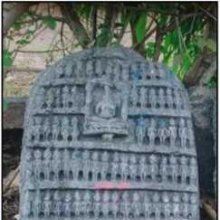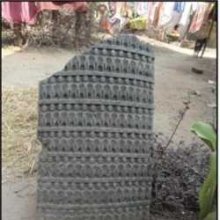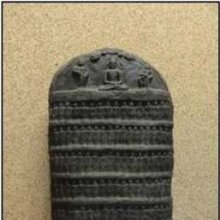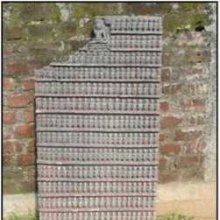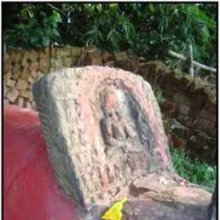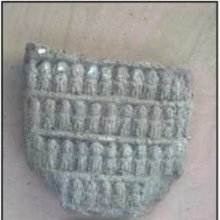Ashtapadatirtha, Aṣṭāpadatīrtha, Ashtapada-tirtha: 1 definition
Introduction:
Ashtapadatirtha means something in Jainism, Prakrit. If you want to know the exact meaning, history, etymology or English translation of this term then check out the descriptions on this page. Add your comment or reference to a book if you want to contribute to this summary article.
The Sanskrit term Aṣṭāpadatīrtha can be transliterated into English as Astapadatirtha or Ashtapadatirtha, using the IAST transliteration scheme (?).
Images (photo gallery)
In Jainism
General definition (in Jainism)
Source: archive.org: Sum Jaina Canonical Sutras (vividhatirthakalpa)Aṣṭāpadatīrtha (अष्टापदतीर्थ).—Here the sons of Ṛṣabha and many sages attained perfection. Indra erected three stūpas. Bharata built a caitya called Siṃha-niṣadya and twenty-four Jina images tohether with his own. The sons of Sagara dug a ditch, which was ultimately turned into a sea. Here Rāvaṇa was attacked by Bāli. Mount Aṣṭāpada (Kailāśa) is a great tīrtha.

Jainism is an Indian religion of Dharma whose doctrine revolves around harmlessness (ahimsa) towards every living being. The two major branches (Digambara and Svetambara) of Jainism stimulate self-control (or, shramana, ‘self-reliance’) and spiritual development through a path of peace for the soul to progess to the ultimate goal.
See also (Relevant definitions)
Partial matches: Tirtha, Ashtapada.
Starts with: Ashtapadatirthotpatti.
Relevant text
Search found 2 books and stories containing Ashtapadatirtha, Ashtapada-tirtha, Aṣṭāpada-tīrtha, Astapada-tirtha, Aṣṭāpadatīrtha, Astapadatirtha; (plurals include: Ashtapadatirthas, tirthas, tīrthas, Aṣṭāpadatīrthas, Astapadatirthas). You can also click to the full overview containing English textual excerpts. Below are direct links for the most relevant articles:
Jain Remains of Ancient Bengal (by Shubha Majumder)
Jain Aṣṭāpadatīrtha Sculptures < [Chapter 6 - Iconographic Study of Jaina Sculptural Remains]
Trishashti Shalaka Purusha Caritra (by Helen M. Johnson)
Part 8: Digging of a moat around Aṣṭāpada < [Chapter V - Life and death of the sons of Sagara]
